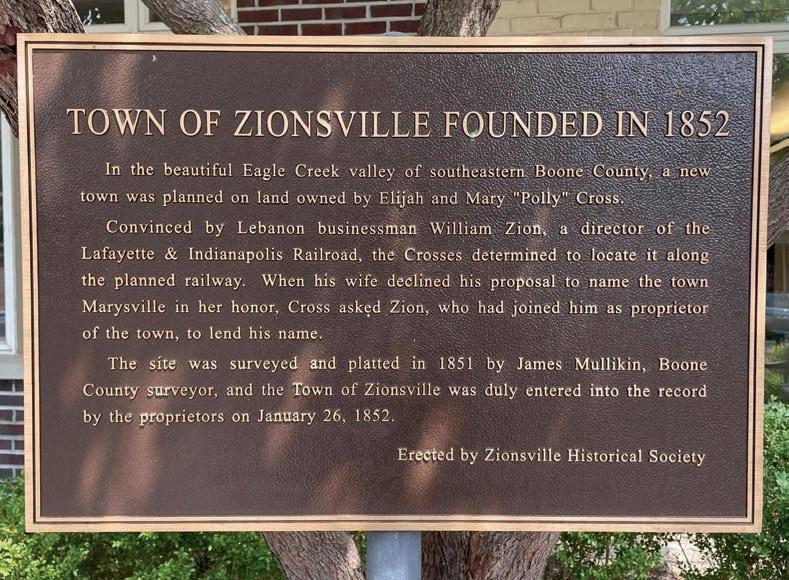
3 minute read
Who Was Mary Cross—the Humble Woman Behind Marysville Road?

The long-anticipated grand opening of the North-South Connector that connects the intersection of CR 850 East/ Cooper Road with CR 875 East to the north of Oak Street—complete with bookend roundabouts (RABs)—is being celebrated by residents and town officials alike.
Advertisement
Writer // Janelle Morrison • Photography // Courtesy of SullivanMunce Cultural Center
Ihave been covering the progress of this project since former Mayor Tim Haak commenced the road project during his administration. The project had been in the town’s transportation plan since 1983 and was officially opened to the public on Sept. 15, 2021. The stretch of road that runs north of Oak Street (CR 875 East)] to Whitestown Road was renamed Marysville Road after the town of Zionsville and Mayor Emily Styron posted a road-naming opportunity, seeking input from the community to name of the newly constructed roadway segment.
OFFICIALLY DUBBED MARYSVILLE ROAD
When the announcement was made that the new roadway segment would be dubbed “Marysville Road,” there were numerous conversations and posts on social media inquiring about who Mrs. Cross was and why a road would be named after her. So, I contacted the SullivanMunce Cultural Center to get more of the story behind Mary Cross.
Cynthia Young, executive director of the SullivanMunce Cultural Center, supplied me with this historical data:
“David Hoover came to Boone County in 1824 with his wife, Rebecca, and their three children, Jacob, Isaac, and Mary, more commonly known as ‘Polly.’ They settled at the junction of Big Eagle and Little Eagle creeks, the first to create a farm there. Hoover slowly amassed land, including that which would become Zionsville. Boone County was established in 1830, and Hoover was elected to be

clerk. The first marriage in the county took place in 1831 at the Hoover cabin, then moved to Oak and Sixth streets, for which Hoover issued the first license. The marriage was between his daughter Polly, then 19 years old, and Elijah Cross. David Hoover died suddenly in late 1835. As his sons had moved away from Indiana, Polly and Elijah inherited and purchased all the Hoover property.
“William Zion and his wife, Amelia, were living in Lebanon soon after the county was established. He became a prominent businessman and in 1847 was appointed as special commissioner for the Lafayette & Indianapolis Railroad. The railroad was to connect the two cities, and so he wished to bring it through Lebanon. He negotiated with acquaintance Elijah Cross to bring the train tracks north parallel to The Michigan Road, then through a new community just west of Eagle Village.
“In 1851, the land was leveled and graded, and they platted 26 acres of land for a new town. Work was finalized in November 1885, but paperwork wasn’t filed until Jan. 26, 1852. Was the delay due to their challenge in finding a name? Elijah wanted to honor his wife, Mary, and name the town after her. She declined, so the men settled on Zion’s Village. It wasn’t long before the name was changed to Zionsville.
“Mary died in 1903, survived by five of their 10 children and a number of grandchildren.”
It is important—as the decades roll by—to know our community’s history and origins, and while we won’t ever know how Cross would’ve felt about her name being immortalized on Google Maps, we do have the responsibility of learning who she was and passing this knowledge down to future generations.





